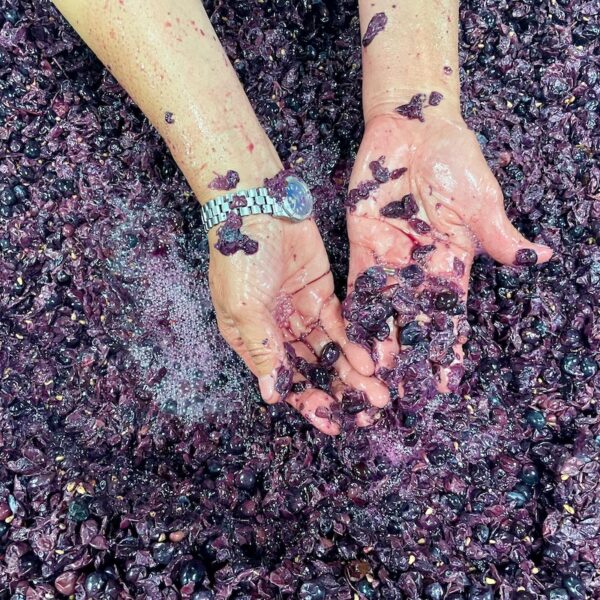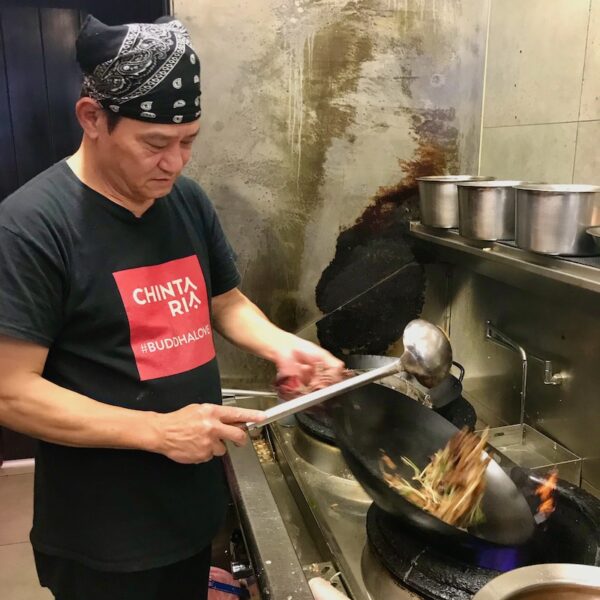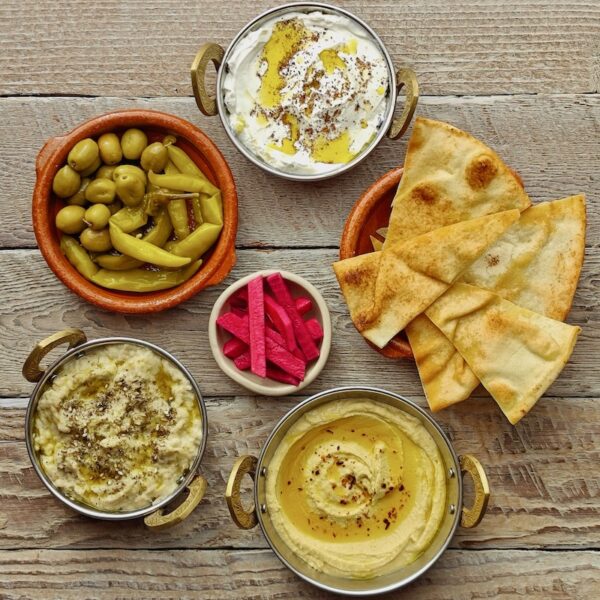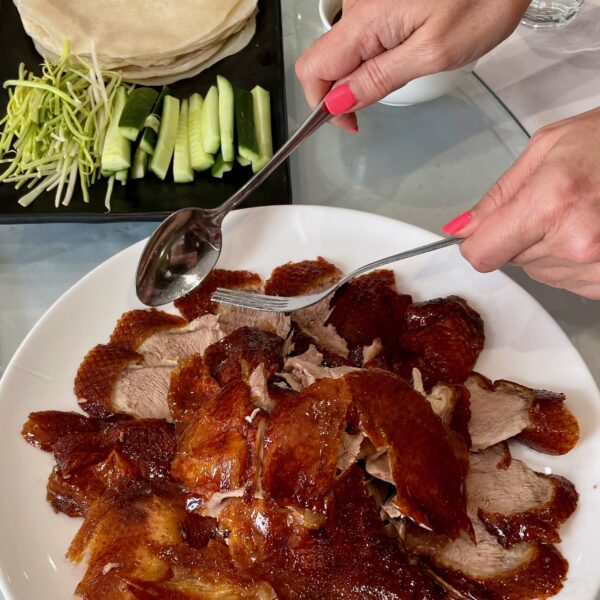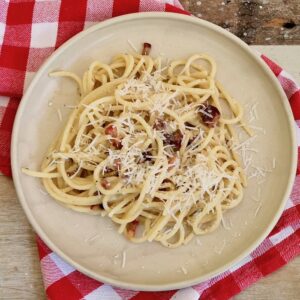 Pasta is the perfect quick and easy comfort food. I always have half a dozen or so basic dried pasta shapes in the pantry for fast, delicious meals that warm the tummy and the heart. Here’s a rundown on the basic pasta shapes with links to some of my favourite recipes to get you started; use them as inspiration and add your own spin based on whatever you have on hand. The Q&A below is your complete guide to cooking pasta perfectly.
Pasta is the perfect quick and easy comfort food. I always have half a dozen or so basic dried pasta shapes in the pantry for fast, delicious meals that warm the tummy and the heart. Here’s a rundown on the basic pasta shapes with links to some of my favourite recipes to get you started; use them as inspiration and add your own spin based on whatever you have on hand. The Q&A below is your complete guide to cooking pasta perfectly.
Pastina
Tiny pasta shapes, collectively called pastina (little pasta), are perfect for adding to soups. There’s rice-shaped risoni (also called orzo, meaning barley), Sardinian fregola (the toasted one is best), stelline (little stars) and tubular ditalini (little thimbles). Add canned beans and tomato for pasta e fagioli, or whatever veggies are on hand for hearty minestrone.
Short Pasta
There are probably more shapes in this category than in any other, and most have several names. Penne (smooth lisce and ridged rigate), curly spirali or fusilli (sometimes called cellentani or cavatappi meaning corkscrew), and bowtie-shaped farfalle (butterfly) are all great with chunky sauces that can cling to them. They handle a bit of chilli well too.
Hollow Pasta
Orecchiette (little ears, traditional to Puglia) and Sardinian malloreddus (or gnocchetti) are short pasta shapes traditionally made by rolling or pressing with the thumb. Strozzapreti (literally ‘strangle the priest’), sometimes called cavatelli, is in this category too, as are conchiglie (little shells). All are good with drier sauces that can nestle in their hollows.
Long Pasta
This large category includes thick and thin strands. Pappardelle and tagliatelle, made with egg, are typical of northern Italy, while those without egg (like spaghetti and hollow bucatini) are from further south. Thinner strands are best with lighter sauces such as cacio e pepe or aglio olio e peperoncino and thicker ones are good with heartier ragús like Bolognese.
Baked Pasta
Flat lasagne sheets and tubular cannelloni (literally ‘large reeds’) are designed for baking. These days they come conveniently par-cooked so you don’t need to boil them first, they soften in the sauce. Large shells, called conchiglione, are also great for filling and baking, though they do need to be boiled first; then there’s the ultimate pasta bake, macaroni cheese.
How To Cook Pasta Perfectly
Is fresh pasta better than dried pasta?
Pasta comes in two basic forms: dried (more typical of southern Italy) and fresh (often containing egg and more common in the north). They are both good products, suitable for different sauces, here we’re talking about dried pasta.
Why is Italian pasta best?
I buy Australian whenever I can, but when it comes to pasta, Italian is best! Dried pasta should be made from just water and durum wheat (a particularly hard variety of wheat); under Italian law no other wheat variety is allowed. Any other wheat creates a pasta that is too soft when cooked.
What’s bronze cut pasta?
The best pasta is extruded through bronze dies rather than the more commercial Teflon-coated ones. This leaves a rougher, more porous texture to give the sauce a better surface to cling to; it’s also called bronze extruded pasta or bronze drawn pasta.
What's artisanal pasta?
Artisanal means that the pasta is made in relatively small quantities and in a traditional way, for example bronze extruded. There are several good brands available in Australia including Rustichella d’Abruzzo, Giovanni Fabbri and I Due Pastori. Some however are quite temperamental and go from hard to soft very quickly. I find a good commercial pasta such as Barilla reliable for consistent results and a little more forgiving if it’s in the pan for a minute too long.
How do you cook dried pasta perfectly?
Always add pasta to plenty of well-salted water that’s been brought to a rolling boil, ideally 1 litre of water and 10-15g of salt for every 100g of pasta. Use the packet timing as a guide, but check by biting a piece regularly during cooking, and cook it until it’s just al dente (literally ‘to the tooth’), meaning it has some resistance or bite to it. It will continue to cook in the heat of the sauce, so be brave and drain it just before you think it’s ready.
Why do you add pasta cooking water to pasta sauce?
Once pasta is cooked, act quickly. Drain it, reserving some of the cooking water, add pasta to the sauce and toss together so that every strand is coated. The pasta cooking water contains starch from the pasta and tossing a little of this through the pasta and sauce gives a creamy consistency and helps bind the sauce and pasta together.
How much sauce should I add to pasta?
The sauce is meant to dress the pasta and flavour it, not drown it. Non-Italians often serve pasta with a lot more sauce than would ever be served in Italy. If you sauce your pasta correctly, by tossing the freshly cooked pasta through the hot sauce, the pasta will absorb the sauce so that every bite has flavour and you’ll need less sauce.
What does pasta risottata mean?
Risottata, meaning ‘in the style of risotto’, is a traditional way of cooking pasta in the sauce rather than by boiling it first then adding it to the sauce at the end. Some recipes cook the dried pasta directly in the sauce, others par-boil it then finish it off in the sauce. Either way the pasta absorbs flavour from the sauce and is extra delicious.
What does al dente mean?
‘Al dente’ literally translates as ‘to the tooth’, meaning the pasta has some bite, or resistance to the tooth. It is how Italians describe pasta (or risotto) that is perfectly cooked, meaning it is tender but still firm enough to have some resistance when bitten. The term only applies to dried pasta, not fresh which is cooked until tender.
Like Pasta? You’ll Love A Month of Northern Italian Recipes+Videos!

